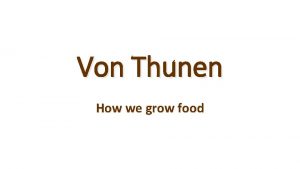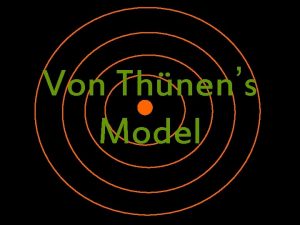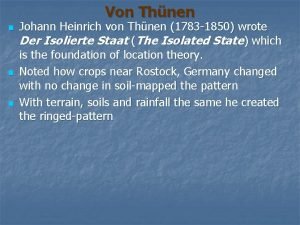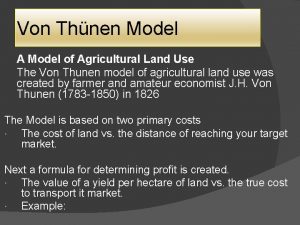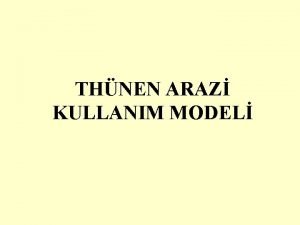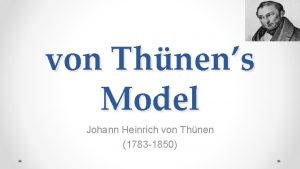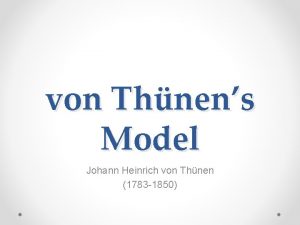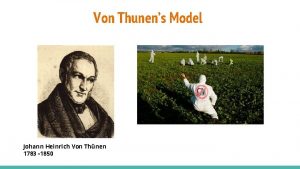von Thnen Model Access to Markets On your







- Slides: 7

von Thünen Model

Access to Markets � On your paper decide where each of the following agricultural activities would be in relation to the market (city) � Cash grain and livestock � Extensive grain farming or stock raising � Specialty farming � Mixed farming � Dairying and market gardening


Access to Markets Two economic factors influence the choice of crops (or livestock) by commercial farmers: access to markets and overproduction. � Because the purpose of commercial farming is to sell produce off the farm, the distance from the farm to the market influences the farmer’s choice of crop to plant. � Geographers use the von Thünen model to help explain the importance of proximity to market in the choice of crops on commercial farms. �

Von Thünen Model Fig. 10 -13: Von Thünen’s model shows how distance from a city or market affects the choice of agricultural activity in (a) a uniform landscape and (b) one with a river.

Example of Von Thünen’s Model � The example shows that a farmer would make a profit growing wheat on land located less than 4 kilometers from the market. � Beyond 4 kilometers, wheat is not profitable, because the cost of transporting it exceeds the gross profit. � More distant farms are more likely to select crops that can be transported less expensively.

Application of Von Thünen’s Model � � � Von Thünen based his general model of the spatial arrangement of different crops on his experiences as owner of a large estate in northern Germany during the early nineteenth century. Von Thünen did not consider site or human factors in his model, although he recognized that the model could vary according to topography and other distinctive physical conditions. The model also failed to understand that social customs and government policies influence the attractiveness of plants and animals for a commercial farmer.
